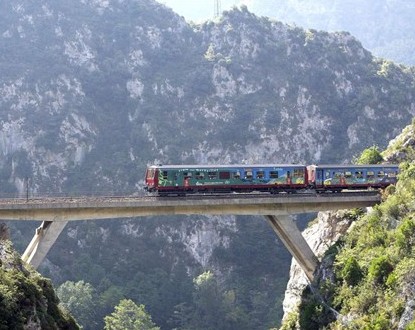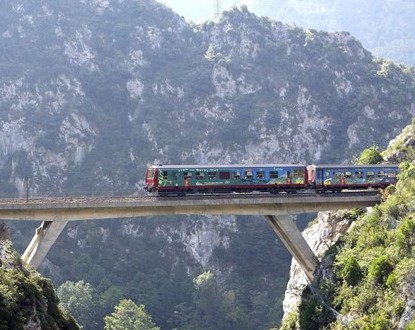On September 7, 1913, the train arrived in Tende. The line came from Limone, and after the tunnel was dug under the Col de Tende, the railway reached Viévola and then Tende. Last Sunday, the Italians did things well for this centenary.

In 1913, the Kingdom of Italy initiated this connection via the Roya, thus linking Piedmont and Liguria with a more direct line than the detour through Savona.
This train is international as it crosses two countries with a border at Fontan and then at Piène with the French enclave of Breil. The Roya was then cut off by the whims and caprices of history.
A steam train with wooden wagons of 2nd and 3rd class. There were cars without doors, the 3rd class; one could board only from the ends, while the 2nd class had a door for each bench, which was quite practical.
This hitch brought us back to an atmosphere where Agatha Christie could have imagined a second version of the Crime on the Orient Express. Smoke filled the compartment; someone forgot to roll up the window.
The train doesn’t go fast; it stops to take on water, but the wagons have warmth, a soul, they are alive, and no matter the time, one feels good, forgets one’s watch, and by lowering the window between two tunnels, admires the landscape even more.
When we left Ventimiglia, the platforms were crowded with onlookers. The locomotive whistles, and the train starts moving slowly, and to the rhythm of the rails’ clatter, we ascend this valley, arriving in Tende, a stop or halt. In the afternoon, after the aubades, we head back to Limone, the terminus of this one-day train ride.
We discovered the quaint charm of the past, and many were surprised not to criticize the slowness of this old engine. It was another time, and our elders may have been right not to prioritize speed.
During our stop in Tende, we met an enthusiast, Mr. Armand Oliviero, who kindly showed us documents, a small part of his collection. We thank him for his warm welcome and his permission to publish them.
Thierry Jan



